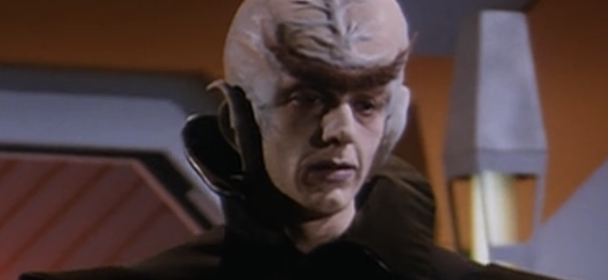Buck Rogers in the 25th Century
Season 1, Episode 14: “Space Vampire”
Original airdate: January 3, 1980
Nirajan: Before we delve into our discussion, I’d like to shed some light on how we choose the episodes for our This Was TV roundtables. The selection process varies, but it typically involves a few criteria.
Sometimes, we pick episodes that are highly acclaimed within the series or are considered standout examples, similar to our choices for episodes like “Demon With a Glass Hand” or “Arena.”
Alternatively, a roundtable member might be familiar with an episode and believe it’s a compelling representation worth discussing, as was the case when Cameron advocated for “Grotesque.”
On occasion, episodes make the cut based purely on having intriguing titles, such as the clear example of “Too Many Cooks are Murder.”
This approach allows us to explore various episodes and engage in thoughtful discussions about various aspects of television.
Regarding the latter category, we can now include “Space Vampire.” If a series has an episode titled “Space Vampire,” that’s the episode that captures my attention.
I don’t require any additional information about the plot, critical reception, or other episodes in the series; “Space Vampire” is the one I’m watching.
Whether the episode has been universally criticized or is considered the weakest link in the series doesn’t sway my decision.
In most cases, I can confidently say that “Space Vampire” delivered precisely what I had hoped for—a competently executed sci-fi story that strikes a balance between the ominous threats of a confined space station and delightfully absurd special effects.
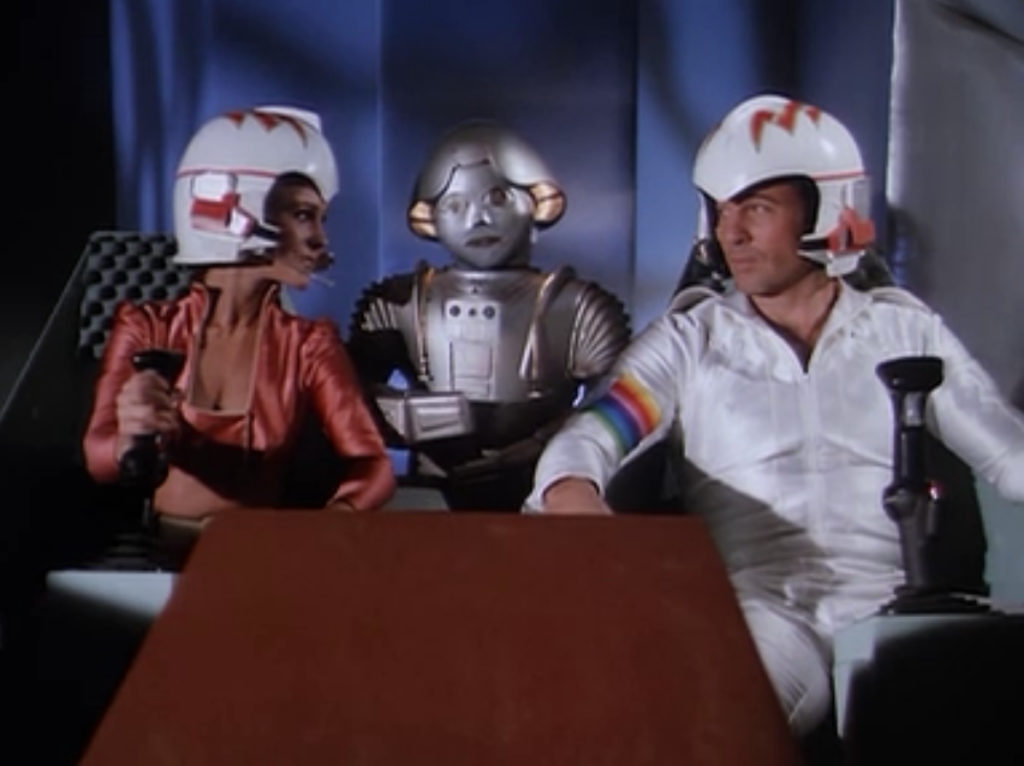
Buck Rogers in the 25th Century transports us to a universe that starkly contrasts those we’ve explored in previous weeks.
Here, the prevailing style is to don jumpsuits that proudly display chest hair, robots sport perpetually cheerful expressions, interstellar collisions resemble the crumpling of tinfoil, and the most pressing concern at home base revolves around whether the commanding officer can keep a plant alive.
Much like “Flash Gordon,” “Buck Rogers” is a space epic rooted in the pulp comic strips of the 1930s, making it a more traditional form of science fiction.
There are no moral dilemmas about venturing into space and engaging with other civilizations, no epic odyssey to undertake, and no civilization-threatening extraterrestrial menace in sight.
Instead, we have our resolute hero, his attractive partner, and a wisecracking sidekick pitted against a formidable space monster and its legion of minions.
In its attempt to deliver all of these elements, the show managed to exceed my initial expectations.
The episode’s premise, revolving around a ghost ship carrying an enigmatic threat to Theta Station, aligns with the recurring theme of unforeseen dangers emerging from space.
I found the early scenes where they explore the crashed Demeter to be quite effective in evoking the claustrophobic tension reminiscent of the style I previously discussed in Doctor Who.
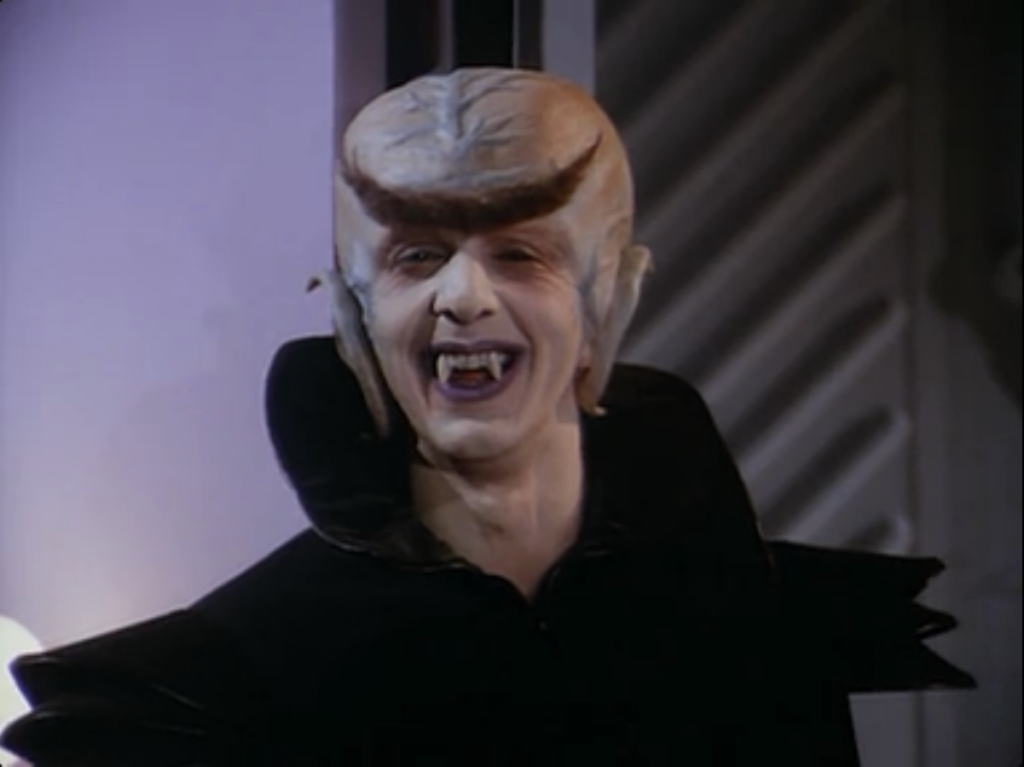
Gil Gerard proves to be a dependable leading man in his portrayal of Buck Rogers, and although I felt the episode somewhat sidelined Wilma Deering into a predictable damsel-in-distress role, Erin Grey infuses the character with an underlying assertiveness.
At the same time, there’s an unmistakable sense of earnestness in most of the events involving the Vorvon, which prevents the episode from truly evoking emotional engagement.
The dialogue exchanges between Buck, Dr. Ecbar, and Dr. Huer about the victims losing their souls come across as theological jargon, lacking any substantial exploration of the interplay between science and belief.
And then, there’s the Vorvon itself—a decidedly ludicrous creation. First, the makeup job, which inexplicably aims to make it resemble a unibrow Ferengi, and then the voice and dialogue, which veer into the realm of classic vampire clichés like “I vant to suck your blood.”
This campy tone is contagious, as Erin Grey delivers some delightfully over-the-top performances, initially when she’s in a state of panic upon seeing the Vorvon (reminiscent of Chris Crocker) and subsequently with her gloriously exaggerated portrayal of the Vorvon attempting to seduce Buck.
Oddly enough, these contrasting elements manage to complement each other quite effectively, striking a balanced harmony.
There are moments that play out as comical misunderstandings, such as Commander Royko mistaking Buck’s encounter with the Vorvon for a hallucination. However, these moments don’t feel forced or contrived; they serve to maintain the episode’s pacing.
While the Vorvon’s appearance may be somewhat absurd, the way it’s deployed keeps it as an unseen and psychological threat for most of the episode, hovering off-screen and toying with the crew’s minds.
Even a character like Twiki, designed for comic relief, manages to find its place.
Yes, he serves as deliberate comedic relief, but his sparing use prevents him from overstaying his welcome, and the fact that he’s voiced by the legendary Mel Blanc adds to his appeal.
(Also, when it comes to miniature supporting characters, Twiki is a definite improvement over Muffit, as I won’t be haunted by Twiki’s lifeless eyes in my nightmares.)
I didn’t intend for this scheduling, but it’s quite fitting that we’re discussing this episode right after Battlestar Galactica.
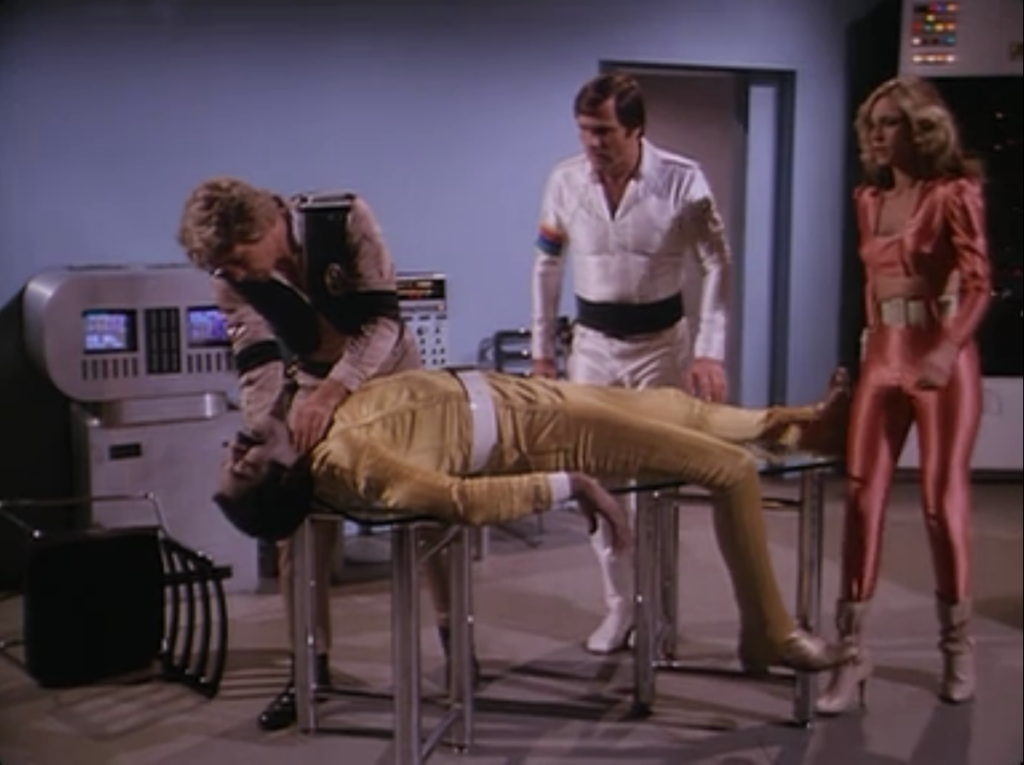
Not only are both series created by Glen A. Larson and share many of the same sets and props, but they also provide an interesting academic perspective on the significance of maintaining a consistent vision when crafting a show, regardless of its overall quality.
When we examine them together, they highlight the importance of having a clear identity for your series.
Battlestar Galactica shifted between serious space opera and family-friendly entertainment, ultimately falling short on both fronts because it lacked a coherent sense of direction.
On the other hand, Buck Rogers in the 25th Century knows precisely what it wants to be: a tongue-in-cheek, pulp comic-inspired, sci-fi spectacle. And in my view, that’s precisely what it should be.
Muskan: Buck Rogers is undeniably a peculiar creation. It’s even more outlandish than Glen A. Larson’s other sci-fi flagship, Battlestar Galactica, yet I prefer it overall.
The original Battlestar Galactica can be grating with its squandered potential and the addition of Space Irish elements. In contrast, Buck Rogers feels like a direct product of the early 20th-century pulp stories that inspired it.
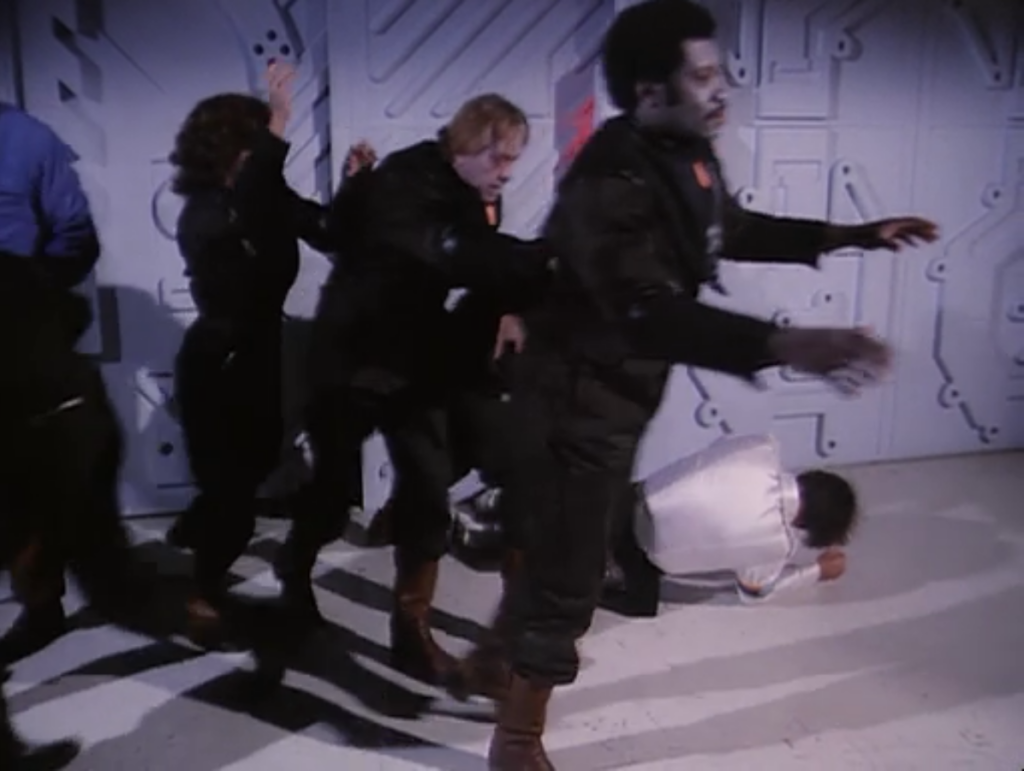
It may not qualify as “good” by conventional standards, but it throws so much at the audience, often in jaw-dropping costumes, that it somehow works.
In this particular episode, the makeup for the titular vampire strikes a unique balance between being silly and genuinely creepy, almost unintentionally so.
It’s just plain enjoyable to witness a futuristic sci-fi series tackling a Gothic folklore trope like vampires, injecting a refreshing twist into the mix.
Kriti: Space vampires? You know, there was another episode titled “Vegas in Space,” and that one would probably be more to my liking.
(Editor’s note: If it had been “Space Werewolf,” we know you’d have been all over this one. – Nirajan)
But you see, I wasn’t entirely taken with Buck Rogers. Every aspect I found enjoyable—the campy makeup and special effects for the vampire, the chemistry between Buck and Wilma, and the generally lighthearted atmosphere in the first half—seemed to be offset by something less appealing.
For instance, the vampire lacking a clear motivation, the presence of the robot Twiki, and the shift towards a darker tone in the second half didn’t sit well with me.
It feels like there’s potential for a show I could genuinely enjoy buried within, but it’s obscured by layers of conventions typical of the serialized format.
Furthermore, aside from a lack of motivation, there doesn’t appear to be a concerted effort to explore vampirism in any meaningful or allegorical way.
Traditionally, writers connect vampirism to themes like sexuality, yet there’s hardly even a hint of that until Wilma becomes infected.
Plague or virus metaphors are another common avenue, but their use in this episode seems more like a real-life reference to counterbalance Buck’s constant insistence on it being vampires (space vampires, to be precise).
The tonal shift is problematic as well: the narrative only takes a darker turn because one of the main characters is directly threatened by the vampire.
However, we’re never provided with a compelling reason for why she’s in peril other than the arbitrary plot demand of “she’s in danger!” So one has to wonder, why introduce this element at all?
I’m willing to entertain the idea that this was simply a subpar episode. It failed to evoke any significant emotions in me, and as a devoted science fiction enthusiast, that’s a disappointing outcome.
I had hoped to establish some kind of connection with the characters and the menace they were confronting, but I couldn’t find any entry point. It left me feeling rather indifferent, much like a space vampire, to be honest.
Astha: This episode actually sparked an intriguing concept for a new series—a kid-friendly space sci-fi serial that adapts and reimagines classic works of public domain literature. Think of it like Wishbone, but set in outer space.
Just imagine the possibilities, including a thrilling two-part season finale based on Macbeth. That would be truly exciting.
I’ve never had the chance to watch Buck Rogers before, but part of me wishes it had been a childhood favorite, something I could look back on now with fond nostalgia.
Unlike the somewhat messy Battlestar Galactica, this show’s confidence in its own identity made me find its cheesiness more charming than bothersome.
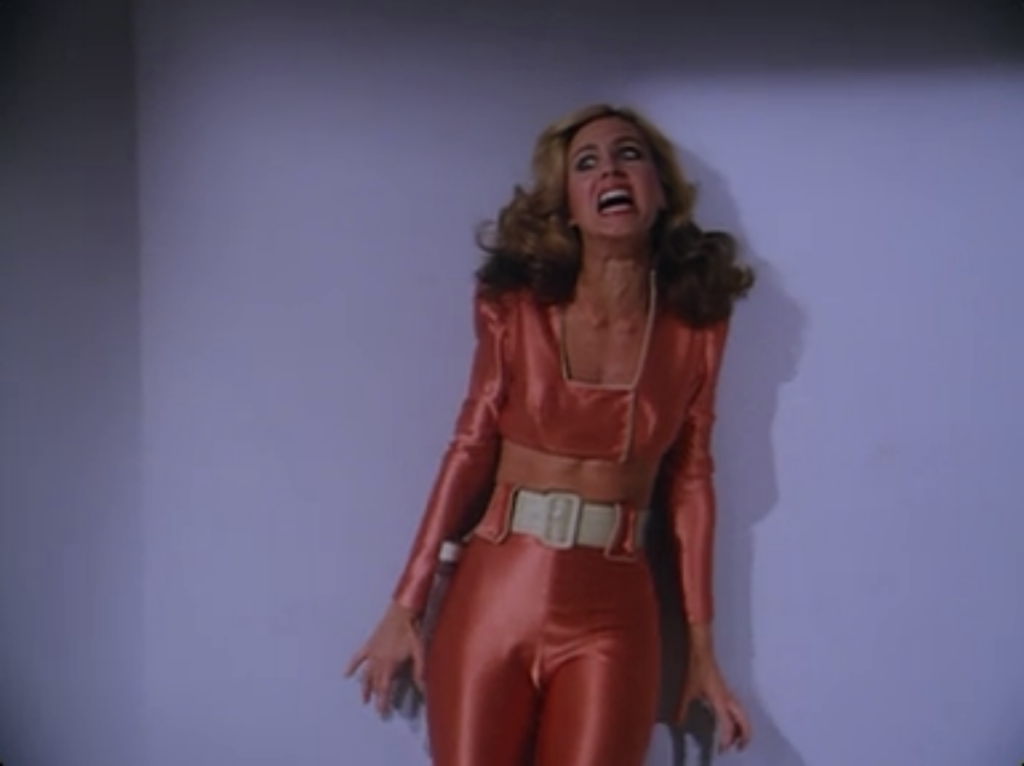
What I truly admire is that they were secure enough in their premise to incorporate a straightforward adaptation of Dracula.
I even thought they did a fairly respectable job of transforming Stoker’s story into a space opera, using the epistolary exposition in the old captain’s logs and introducing a Van Helsing-like character who failed to defeat the Vorvon.
(Although the mention of the creature originating in the “Rumaine system” felt a bit too clever.) The makeup effects might not have been convincing, but they stayed true to the lo-fi aesthetic, and I even found them rather unsettling at times.
Where “Space Vampire” stumbled for me was in its unfortunate attempts at comic relief.
The scenes with Dr. Huer, humorously incapable of caring for Buck’s plant, not only felt painfully clichéd but also disrupted the eerie tone of the main storyline and consumed time that could have been dedicated to exploring the Vorvon’s unclear motivations.
It felt out of place and forced, almost as if there were subtitles reading, “We are trying to lighten the mood!”
Nevertheless, on the whole, I found myself rather impressed.
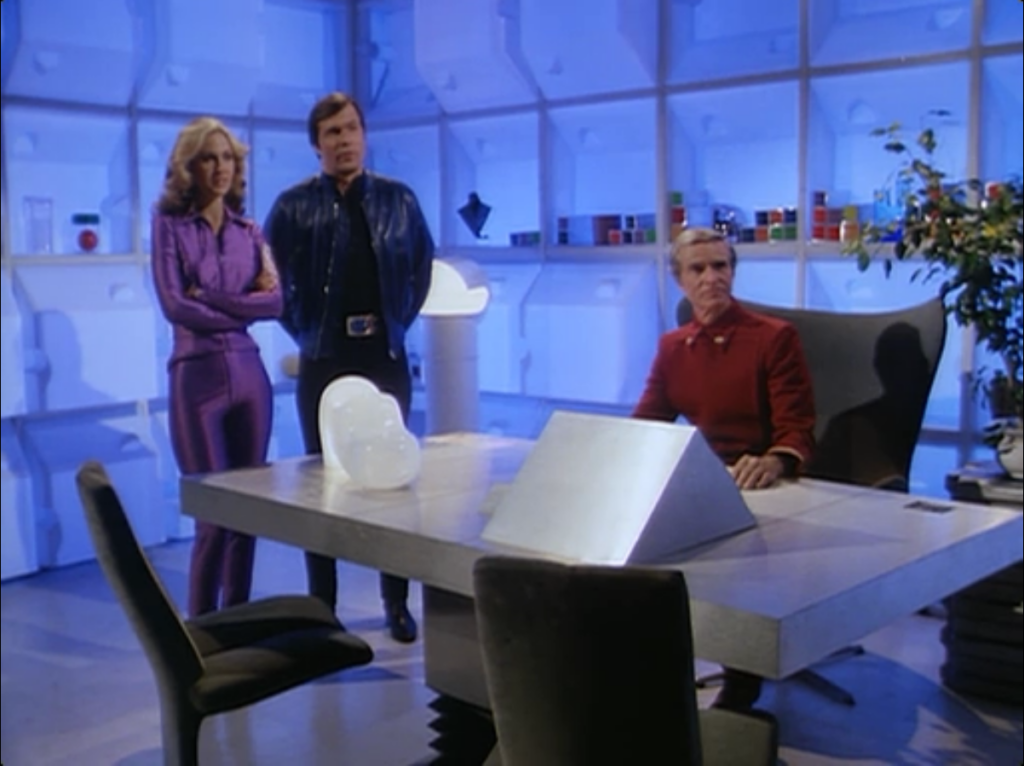
Nirajan, your assessment is spot-on: Buck Rogers knows precisely what it is, and as a result, it delivers a competently executed (albeit budget-conscious and cheesy) action-adventure series.
However, like Battlestar Galactica, I can’t help but think it might be ripe for a dark and gritty reboot. Does anyone happen to have Ronald D. Moore’s phone number?
Also Read: Roundtable Review: Airwolf, “Fallen Angel”


